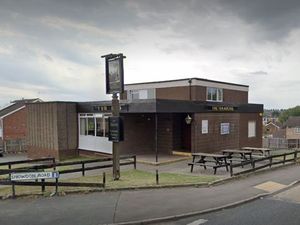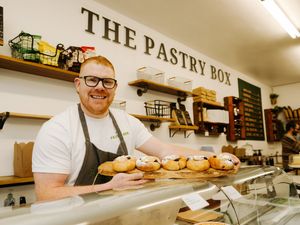Sad day as Halesowen buttons maker comes to end
For generations, skilled Black Country crafstmen have turned out the highest-quality buttons for the biggest names in fashion.
But today their workshops lay abandoned, and the factory of 155-year James Grove & Sons in Halesowen was empty and quiet.
It appears to be the end of an era for a family business that had been making up to 40 million traditional horn buttons a year.
Just this summer the company was revelling in new work from top fashion brands Barbour and Burberry, Ralph Lauren and Ben Sherman. The only problem on the horizon appeared to be the company's ageing workforce and the difficulty of replacing valuable skills as staff retired.
But a month later, managing director Sue Witcutt, who had steered the business for the previous six years, working with owner Peter Grove, had been terminated as a director. Two new directors, taken on in August, were terminated last month. Today the factory that had been the home of
James Grove & Sons since 2007, in Stourbridge Road, Halesowen, stands empty, and there is no sign of the 20-strong workforce.
The business originally started out in premises at the junction of Birmingham Road and Cornbow in Halesowen in 1857 and moved to its present site in Stourbridge Road in 1865 where the old Bloomfield Works was built.
The works was replaced in 2006 when the company invested £1.5 million in its present purpose-built factory, where about 40 million buttons a year were made.
When founder James Grove started up the business he sold horn and hoof buttons made in Halesowen from hotel rooms as he travelled across Europe. The firm grew and built up markets supplying uniform buttons for the military, railways and the GPO – at its peak in 1917 it employed 600.
James Grove had still been turning buttons from traditional horn from Asia and also used polyester, corozo and casein as raw materials.
The 20-strong workforce includes some highly-skilled and experienced craftsmen including one employee who had been with the company for half a century.
Indeed, the skills of its workers was seen as one of the strengths of the business as it tried to step up marketing earlier this year to attract fresh orders, using its website to get its designs across to new customers.
Its proud tradition had seen James Grove and Sons supply buttons to the Ministry of Defence, British Railways and the General Post Office, and the firm's history can be traced back to making buttons during the American Civil War of 1861 as well as for British soldiers fighting in the trenches of the First World War.
Founder James Grove served his apprenticeship with William Harris, who had a button factory at Spring Hill, which quickly became the largest and best-equipped horn button factory in Britain.
James and his wife Ann Elizabeth set up their business in premises rented from Ann's father, but in 1865 this proved to be too small and so they decided to build the Bloomfield Works in Stourbridge Road.
The company employed about 600 men and women. Today, it employs around 40 people using sophisticated machinery and polishing techniques. When James Grove died in 1886 the reputation of the company as makers of top-quality horn buttons was firmly established. When visiting the Bloomfield Works in the 1950s people would have seen the long line of storage sheds piled high with sacks of horns and hoofs.
The horns and hoofs were the raw materials used to make buttons – and any that were rejected were ground down to make fertiliser, so nothing was wasted.
Pieces of horn were put into steam heated presses to make them flat and then button blanks were cut out by machines.
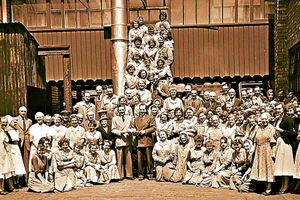
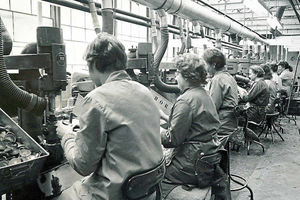
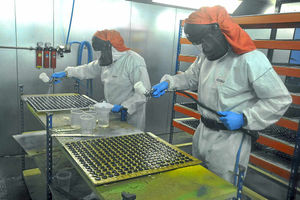
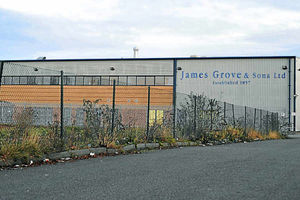
After five generations, the modern manufacturing process had been similar, with some work still done by hand.



